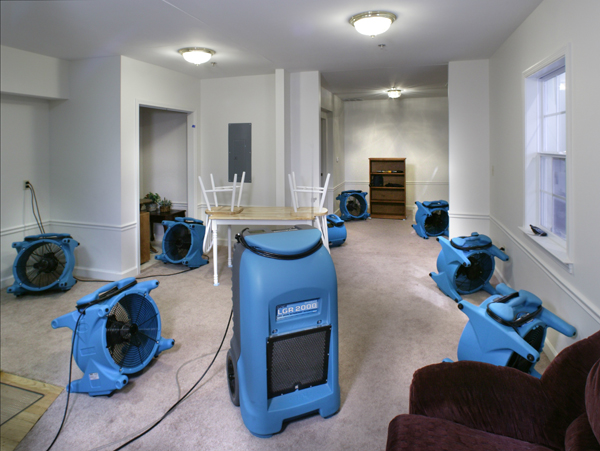Water is essential for life, but when it infiltrates your home or business premises unexpectedly, it can lead to severe damage and disruption. This comprehensive guide will explore the world of water restoration, a vital process that focuses on mitigating water-related damages, saving possessions, and restoring properties to their pre-loss conditions. From understanding the key principles of water restoration to the various techniques and professional services available, this article delves into the intricacies of this essential field.
Understanding Water Restoration
Water restoration, often referred to as water damage restoration, is the process of mitigating and reversing the damage caused by water intrusion into buildings. This damage can result from various sources, including natural disasters, plumbing failures, leaky roofs, or even everyday accidents. The primary goal of water restoration is to address the immediate damage, prevent further harm, and restore the affected areas to a safe and habitable condition.
The Water Restoration Process
Water restoration typically follows a well-structured process to ensure efficient and effective recovery. This process can be broken down into several key stages:
- Assessment and Inspection: The restoration team begins by assessing the extent of the damage. This involves identifying the source of the water intrusion and determining the category and classification of the water (clean, gray, or black water). Understanding these factors is crucial in deciding the appropriate restoration approach.
- Water Removal: The next step involves removing the excess water from the affected area. This can be done using specialized pumps, vacuums, and other water extraction equipment. The goal is to eliminate standing water as quickly as possible.
- Drying and Dehumidification: After water removal, the drying process begins. Industrial-grade dehumidifiers and air movers are used to reduce moisture levels and prevent mold growth. This step is crucial in avoiding secondary damage.
- Cleaning and Sanitizing: Water restoration also includes cleaning and sanitizing the affected areas. This helps to eliminate contaminants and ensure that the environment is safe and healthy for inhabitants.
- Repairs and Restoration: The final stage involves repairing or replacing damaged structural elements, such as drywall, flooring, and insulation. Restoration professionals aim to bring the property back to its pre-loss condition.
Types of Water Damage
Water damage is categorized into different classes and categories, depending on the source, severity, and extent of the damage. Understanding these classifications is essential for restoration professionals to determine the appropriate response. Here are the primary categories and classes of water damage:
Water Damage Categories:
- Category 1 (Clean Water): This is the least contaminated type of water damage. It typically results from sources like broken water supply lines, sink overflows, or rainwater. Clean water is not hazardous and poses no immediate health risks.
- Category 2 (Gray Water): Gray water is slightly contaminated and may contain substances that can cause discomfort or illness if ingested. It often results from sources like washing machine overflows or discharge from dishwashers.
- Category 3 (Black Water): Black water is highly contaminated and poses significant health risks. It can contain sewage, bacteria, and other harmful substances. Black water damage typically arises from sources like sewage backups, flooding, or standing water that has become stagnant.
Water Damage Classes:
- Class 1: Class 1 water damage involves minimal water absorption and affects only a small area. It is the least severe class of water damage.
- Class 2: Class 2 water damage affects a larger area and may involve structural elements like carpeting or padding. It has a faster rate of evaporation.
- Class 3: Class 3 water damage is characterized by the fastest rate of evaporation. It often affects ceilings, walls, insulation, and subflooring, requiring extensive restoration efforts.
- Class 4: Class 4 water damage refers to specialty drying situations, where materials with low permeance, such as hardwood floors or concrete, are affected. These materials may require extended drying times and unique drying methods.
Professional Water Restoration Services
Water restoration is a complex and often time-sensitive process that requires the expertise of trained professionals. Restoration companies offer a range of services to address water damage effectively:
- Emergency Response: Professional restoration teams are available 24/7 to respond to water damage emergencies. They can assess the situation quickly and begin mitigation efforts immediately.
- Water Extraction: Specialized equipment, such as pumps and industrial wet/dry vacuums, is used to extract water from the affected areas.
- Drying and Dehumidification: Restoration professionals employ powerful dehumidifiers and air movers to facilitate thorough drying and prevent mold growth.
- Mold Remediation: In cases of prolonged water exposure, mold can become a concern. Restoration experts are trained to address mold issues and prevent its spread.
- Structural Repairs: Restoration companies can perform necessary structural repairs, including replacing drywall, insulation, flooring, and other components.
- Content Restoration: Water damage often affects personal belongings. Restoration professionals can salvage, clean, and restore items like furniture, documents, and electronics.
- Insurance Claims Assistance: Many restoration companies assist property owners in navigating the insurance claims process, ensuring that they receive fair compensation for the damage.
Importance of Water Restoration
Water restoration is essential for several reasons:
- Preventing Structural Damage: Rapid restoration efforts can prevent extensive structural damage to your property, reducing repair costs.
- Mold Mitigation: Quick action is key to preventing mold growth, which can lead to health issues and further property damage.
- Health and Safety: Proper restoration ensures that the affected area is safe for occupants and free from contaminants.
- Preserving Possessions: Water restoration can help salvage valuable possessions, such as family heirlooms or important documents.
- Minimizing Business Downtime: For commercial properties, efficient restoration is crucial in minimizing business interruptions and revenue losses.
Preventing Water Damage
While water restoration is crucial, prevention is always the best approach. Here are some steps to help prevent water damage in your home or business:
- Regular Maintenance: Schedule regular inspections and maintenance for plumbing systems, roofs, and building exteriors.
- Proper Insulation: Ensure that your property is properly insulated to prevent freezing pipes in cold climates.
- Sump Pump Installation: Consider installing a sump pump in your basement to prevent flooding from groundwater.
- Roof Maintenance: Keep your roof in good condition to prevent leaks and water infiltration during heavy rainfall.
- Appliance Maintenance: Regularly inspect and maintain appliances like washing machines, dishwashers, and water heaters to prevent leaks.
- Landscaping: Proper landscaping and grading can direct water away from your property, reducing the risk of foundation leaks.
Conclusion
Water restoration is a critical process that can save your property from the devastating effects of water damage. Whether it’s a small leak or a major flood, timely and professional restoration is essential to prevent further harm, ensure the safety of occupants, and restore your property to its pre-loss condition. Understanding the water restoration process, categories, and classes of water damage, as well as the services offered by professionals, empowers property owners to take the right steps when faced with water-related emergencies. Remember that while restoration is vital, prevention remains the best strategy.




